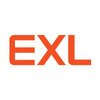Accounts Payable Analyst
40+ Accounts Payable Analyst Interview Questions and Answers

Asked in Searce Cosourcing Services

Q. This company does not use accounting software like SAP or Oracle for AP processing due to budget constraints. What solution would you recommend?
Implement cost-effective solutions like spreadsheets, cloud-based tools, and automation for efficient AP processing.
Utilize spreadsheet software (e.g., Excel) for tracking invoices and payments, allowing for easy data manipulation and reporting.
Adopt cloud-based accounting tools (e.g., QuickBooks, Xero) that offer affordable subscription models and can scale with the business.
Implement automated invoice processing solutions (e.g., Receipt Bank, Expensify) to reduce manual ent...read more

Asked in Accenture

Q. What are PO and Non-PO invoices?
PO invoices are based on purchase orders while NON-PO invoices are not.
PO invoices are invoices that are associated with a purchase order.
NON-PO invoices are invoices that are not associated with a purchase order.
PO invoices require a purchase order number to be included on the invoice.
NON-PO invoices do not require a purchase order number to be included on the invoice.
PO invoices are typically used for larger purchases or ongoing services.
NON-PO invoices are typically used f...read more
Accounts Payable Analyst Interview Questions and Answers for Freshers

Asked in HCLTech

Q. What is an invoice number and why is it important?
An invoice number is a unique identifier assigned to each invoice for tracking and reference purposes.
Invoice number helps in identifying and tracking the payment status of a particular invoice.
It is important for record-keeping and audit purposes.
It helps in avoiding duplicate payments and ensures accuracy in accounting.
For example, if a company receives multiple invoices from the same vendor, each invoice will have a unique invoice number for easy identification and trackin...read more

Asked in Wipro

Q. Please explain the P2P Cycle.
The P2P Cycle refers to the end-to-end process of purchasing goods or services, from requisition to payment.
The cycle starts with a purchase requisition, where a request is made for goods or services.
The requisition is then approved by the appropriate authority.
A purchase order is created based on the approved requisition, specifying the details of the purchase.
The purchase order is sent to the supplier or vendor.
Upon receiving the goods or services, the receiving department ...read more

Asked in FLSmidth

Q. What is the accounts payable process?
Accounts payable process is the set of procedures and policies that a company follows to manage its outstanding invoices and payments to vendors.
Receiving and verifying invoices from vendors
Matching invoices with purchase orders and receiving reports
Obtaining approval for payment
Entering invoices into the accounting system
Preparing and issuing payments to vendors
Reconciling vendor statements
Maintaining accurate records of all transactions

Asked in Accenture

Q. What is the procure-to-pay process?
Procure to pay process is the cycle of purchasing goods or services, receiving them, and paying for them.
Procurement: identifying the need for goods or services and selecting a supplier
Purchase order: creating a document that outlines the details of the purchase
Receipt of goods or services: verifying that the goods or services were received as ordered
Invoice processing: receiving and verifying the invoice from the supplier
Payment: issuing payment to the supplier
Examples: orde...read more
Accounts Payable Analyst Jobs




Asked in Optum Global Solutions

Q. What are accruals? Explain with an example.
Accruals are expenses incurred but not yet paid or recorded in the books.
Accruals are a way of recognizing expenses in the period they are incurred, rather than when they are paid.
They are recorded as a liability on the balance sheet until they are paid.
Examples of accruals include salaries and wages, interest, and taxes.
Accruals are important for accurate financial reporting and forecasting.

Asked in HCLTech

Q. What are 3-way and 4-way matching processes?
3 way match compares purchase order, goods receipt and invoice. 4 way match adds payment to the comparison.
3 way match ensures that the quantity and price on the invoice match the purchase order and goods receipt.
4 way match adds the payment to the comparison to ensure that the vendor is paid correctly.
This process helps prevent overpayment or underpayment to vendors.
Example: A company orders 100 units of a product, receives 100 units, and is invoiced for 100 units at the agr...read more
Share interview questions and help millions of jobseekers 🌟


Asked in HCLTech

Q. what is consigner and consignee
Consigner is the person who sends goods to another person or company, while consignee is the person or company who receives the goods.
Consigner is the sender of goods
Consignee is the receiver of goods
Consigner retains ownership of the goods until they are sold by the consignee
Consignee pays the consigner for the goods sold
Example: A clothing manufacturer sends their products to a retail store for sale. The manufacturer is the consigner and the retail store is the consignee.

Asked in Genpact

Q. How do you conduct a phone interview?
Sharing my phone interview experience highlights my preparation, communication skills, and adaptability in a professional setting.
Preparation: I researched the company and role, which helped me answer questions confidently.
Practice: I conducted mock interviews with friends to refine my responses and improve my delivery.
Environment: I chose a quiet space with minimal distractions to ensure clear communication.
Notes: I had key points and questions written down to reference duri...read more

Asked in Colgate Palmolive

Q. What is the concept of three-way matching in procurement and accounts payable?
Three-way matching ensures accuracy in procurement by comparing purchase orders, invoices, and receipts.
Involves three documents: Purchase Order (PO), Invoice, and Receipt.
PO outlines the terms of purchase, including quantities and prices.
Invoice is submitted by the supplier requesting payment for goods/services.
Receipt confirms that the goods/services were received as per the PO.
Example: If a company orders 100 widgets (PO), receives 100 widgets (Receipt), and is billed for ...read more

Asked in Godrej Industries Group

Q. Explain the procure-to-pay process.
Procure to pay process involves obtaining goods or services and paying for them.
Procurement department identifies the need for goods or services
Vendor selection and negotiation
Purchase order creation and approval
Goods or services receipt and inspection
Invoice receipt and verification
Payment processing and reconciliation
Vendor management and performance evaluation

Asked in WNS

Q. What is the difference between a PO invoice and a non-PO invoice?
PO invoice is based on a purchase order while non-PO invoice is not.
PO invoice is generated when a purchase order is created and received by the vendor.
Non-PO invoice is generated when there is no purchase order involved.
PO invoice has a reference to the purchase order number and details.
Non-PO invoice does not have a reference to any purchase order.
PO invoice is easier to process and match with the purchase order.
Non-PO invoice requires more manual effort to process and matc...read more

Asked in EXL Service

Q. What is the journal entry for Accounts Payable?
Journal entry of Accounts Payable
Debit Accounts Payable account for the amount owed
Credit Cash or Bank account for the amount paid
If a discount is taken, credit the Discount Received account
If a purchase return is made, credit the Purchase Returns and Allowances account

Asked in Colgate Palmolive

Q. What is the accounting entry for a purchase transaction?
The accounting entry for a purchase transaction typically involves debiting an expense or asset account and crediting accounts payable.
Debit the relevant expense account (e.g., Inventory, Supplies) to reflect the increase in assets.
Credit Accounts Payable to show the obligation to pay the supplier.
Example: Purchasing $1,000 of office supplies would involve: Debit Office Supplies $1,000, Credit Accounts Payable $1,000.
If paid immediately, also include a credit to Cash or Bank ...read more
Asked in PGAGI

Q. What is a debit balance?
Debit balance is the amount owed by a customer to a supplier or vendor.
Debit balance is the opposite of credit balance.
It represents a positive balance in the account.
It indicates that the customer owes money to the supplier or vendor.
For example, if a customer has a debit balance of $500, it means they owe $500 to the supplier or vendor.

Asked in Genpact

Q. What is accounts payable?
Accounts payable is the amount of money a company owes to its vendors or suppliers for goods or services received.
It is a liability account in the company's general ledger.
It includes invoices, bills, and other expenses that need to be paid.
It is important for managing cash flow and maintaining good relationships with vendors.
Examples include rent, utilities, and inventory purchases.
Accounts payable can be managed through software systems like SAP or QuickBooks.

Asked in Wipro

Q. Explain the payment process.
The payment process involves receiving and verifying invoices, obtaining approval, issuing payment, and recording transactions.
Invoices are received from vendors and checked for accuracy and completeness.
The invoices are then matched with purchase orders and receiving reports to ensure that the goods or services were received.
The invoices are approved by the appropriate personnel, such as department managers or executives.
Payments are issued to vendors via check, electronic t...read more

Asked in Optum Global Solutions

Q. What is the difference between a Purchase Order (PO) and a Non-Purchase Order?
PO refers to Purchase Order while Non PO refers to expenses without a purchase order.
PO is a document that outlines the details of a purchase, including the items or services being purchased, the quantity, and the agreed-upon price.
Non PO expenses are those that do not require a purchase order, such as office supplies or travel expenses.
POs are typically used for larger purchases or purchases from new vendors, while non PO expenses are more routine and smaller in nature.
POs h...read more

Asked in EXL Service

Q. How do you process payments to clients?
Payment to Clint can be made through various methods such as wire transfer, check, or online payment portals.
Determine the payment method preferred by Clint
Obtain necessary payment information such as account number and routing number
Ensure that there are sufficient funds to cover the payment
Record the payment in the appropriate accounting system

Asked in Genpact

Q. What is Balance sheet? What are golden rule of accounting Cash flow statement? Working capital?
Balance sheet is a financial statement that shows a company's assets, liabilities, and shareholders' equity at a specific point in time.
Balance sheet is a snapshot of a company's financial position.
It includes assets (what the company owns), liabilities (what the company owes), and shareholders' equity (the company's net worth).
The balance sheet follows the accounting equation: Assets = Liabilities + Shareholders' Equity.
It helps in assessing the financial health and stabilit...read more

Asked in PVR Inox

Q. Which codes are used in SAP?
The code used in SAP for Accounts Payable is typically vendor codes, general ledger account codes, and tax codes.
Vendor codes are used to identify specific vendors for payment processing.
General ledger account codes are used to categorize expenses and revenues.
Tax codes are used to determine the tax treatment of transactions.
Examples: Vendor code - V001, General ledger account code - 6000, Tax code - TX

Asked in Optum Global Solutions

Q. What is a duplicate payment?
Duplicate payment is when a vendor is paid twice for the same invoice or service.
Occurs when a payment is made for the same invoice or service more than once
Can happen due to errors in the payment system or manual errors
Can result in financial loss for the company
Can be prevented by implementing proper controls and checks
Example: Paying an invoice twice due to a system glitch

Asked in Arena Investors

Q. Why payment get rejected and P2P cycle
Payments can get rejected in the P2P cycle due to various reasons such as incorrect invoice details, insufficient funds, or discrepancies in the purchase order.
Incorrect invoice details such as wrong amount, incorrect vendor information, or missing payment terms can lead to payment rejection.
Insufficient funds in the account designated for payments can cause rejection of the transaction.
Discrepancies between the purchase order, invoice, and payment can result in rejection of ...read more

Asked in EXL Service

Q. What is an order confirmation?
Order confirmation is a document that verifies the details of a purchase order and confirms that it has been received and accepted by the supplier.
Order confirmation is sent by the supplier to the buyer after receiving a purchase order.
It includes details such as order number, item description, quantity, price, delivery date, and payment terms.
It serves as a proof of agreement between the buyer and supplier and helps to avoid any misunderstandings or disputes.
Order confirmati...read more

Asked in Johnson Controls

Q. What is account reconciliation?
Account reconciliation is the process of comparing financial records to ensure they match and resolving any discrepancies.
Account reconciliation involves comparing two sets of records, such as bank statements and internal financial records, to ensure they match.
Any discrepancies found during the reconciliation process must be investigated and resolved.
Account reconciliation helps ensure the accuracy and integrity of financial data.
Examples of account reconciliation include re...read more
Asked in Ingemetal Solar india

Q. What are journal entries?
Journal entries are essential for recording financial transactions in accounting.
A journal entry consists of a date, accounts affected, amounts, and a description.
Example: To record a purchase, debit 'Inventory' and credit 'Accounts Payable'.
Each entry must balance, meaning total debits must equal total credits.
Journal entries can be recurring for regular transactions like rent or salaries.
They are the first step in the accounting cycle before posting to the ledger.

Asked in DXC Technology

Q. What is the Procure-to-Pay (P2P) process?
PTP stands for Procure-to-Pay, which is the process of obtaining and paying for goods and services from suppliers.
The process starts with the procurement team identifying the need for goods or services.
Once the need is identified, the team requests quotes or proposals from potential suppliers.
After selecting a supplier, a purchase order is created and sent to the supplier.
Upon receiving the goods or services, the supplier sends an invoice to the accounts payable team.
The acco...read more

Asked in EXL Service

Q. What is P2P?
P2P stands for Procure-to-Pay, a process that involves purchasing goods or services and paying for them.
P2P is a cycle that starts with identifying the need for a product or service and ends with payment.
It includes steps like requisition, purchase order creation, invoice processing, and payment.
P2P helps organizations streamline their procurement process and reduce costs.
Examples of P2P software include SAP Ariba, Coupa, and Oracle Procurement Cloud.

Asked in Optum Global Solutions

Q. Explain the Invoice to Pay Cycle.
Invoice to Pay Cycle is the process of receiving and processing invoices, verifying them, and making payments to vendors.
The cycle starts with receiving invoices from vendors
Invoices are then verified for accuracy and completeness
The invoices are then approved for payment
Payments are made to vendors either through check or electronic transfer
The cycle ends with reconciling payments and closing out the invoice
The cycle can take anywhere from a few days to several weeks dependi...read more
Interview Questions of Similar Designations
Interview Experiences of Popular Companies








Reviews
Interviews
Salaries
Users

















